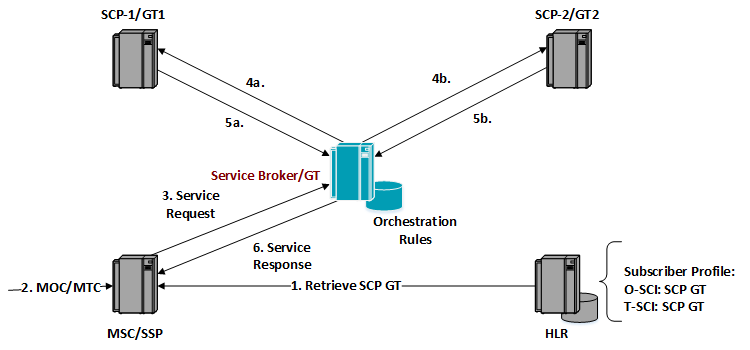IN Service Broker (TRIM)
Trigger Interaction Manager for IN Services
IN Services Current Perspective
The IN standards regulate the implementation of the services in SCP nodes where they are kept apart from the call session handling in switching centres. In addition:
- the session control relationship maintained by IN SCP based services is limited by capabilities and triggers defined in INAP and CAP protocol versions implemented in the SSP and SCP nodes
- the business logic of IN services intertwines with protocol handling logic and protocol specific state machines
- typically, the IN services are supplied by different vendors who frequently use proprietary versions of the protocols
- IN services are often incompatible with the equipment from another vendor and often associated with a dedicated billing system
- operators depend on vendors for any changes in the IN service business logic
- triggers in subscribers profiles are usually already reserved for specific IN services. A big portion of IN services is offered in a dynamic market with a predominantly young population having almost exclusively pre-paid subscriptions with on-line billing associated with originating triggers in subscriber profile
- offering new services to subscribers with triggers occupied for other services (e.g., on-line billing for pre-paid subscribers) requires integration between services
- any integration or orchestration between the existing services in order to create a service bundle would also require a significant amount of changes in the business logic of these services
The extension of the subscriber base of the existing services and the creation of high value service bundles will increase the revenue and improve the ARPU figures.
The corresponding IN Service integration requires special trigger interaction management function and corresponding configurable logic for orchestration of IN services in some middleware node staying between the switching and service layers in the IN network.

IN Service Broker (TRIM) Description
Applicata Service Broker is a Trigger Interaction Manager (TRIM) middleware. It strings together multiple services in IN environment, originally designed and deployed to operate over different protocols and vendor-specific equipment.
Product Details
Service Broker is a standalone solution that resides between the control layer of the network and applications and acts as a liaison between the network switching equipment (MSC/SSP) and IN service domain (SCP).
Operation flow comprises the following processing steps:
- A service request originated by a SSP node is sent to the Service Broker.
- It applies configurable logic that identifies which IN services have to be invoked for the received request.
- In turns it passes the request to one or several SCPs before returning the response to the originating SSP node.
JN Service Broker solution
Service Orchestration Function
Applicata Service Broker comes with a Service Orchestration Function for flexible orchestration and bundling the services. The Service Orchestration Function provides open functionality to create and apply specific processing logic and orchestration rules that control the required interactions between the involved services, heterogeneous service domains, networks and protocols. The orchestration rules are described using XML syntax.
The Service Orchestration Function provides an open functionality for:
- creating, deploying and applying specific processing logic for different service orchestration sessions
- analyzing the parameters of inbound protocol dialogues and/or messages and for routing these dialogues or messages to new or to existing service orchestration sessions
Typical use scenarios
- Moving existing services off of proprietary hardware platforms
- Composing bundles of existing services
- Extending the service availability to broader set of subscribers
- Sharing IN triggers between different services and SCPs
Features
- IN-to-IN trigger management
- Trigger several services instead of trigger chaining
- Combine existing services into new bundles
- Severs any proprietary links between the underlying network and the application layer of the network
- Supports CAP 1,2,3 and 4, INAP, INAP CS1+
Benefits
- Extend the existing service-layer offerings to more subscribers
- New subscriptions for new value added services
- Offer attractive bundles with higher value
- Improve ARPU
- Radically increase the service introduction agility of the operators